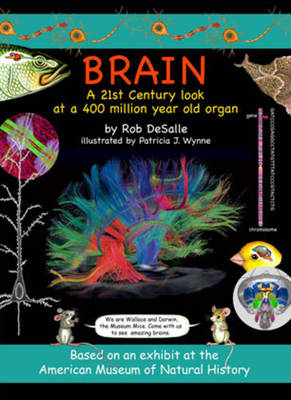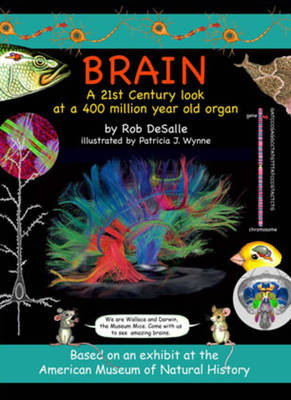
- Retrait gratuit dans votre magasin Club
- 7.000.000 titres dans notre catalogue
- Payer en toute sécurité
- Toujours un magasin près de chez vous
- Retrait gratuit dans votre magasin Club
- 7.000.0000 titres dans notre catalogue
- Payer en toute sécurité
- Toujours un magasin près de chez vous
Description
Brain: A 21st Century Look at a 400 Million Year Old Organ (Bunker Hill Publishing; available: October 2010) is the companion volume to the highly acclaimed Bones, Brains and DNA, and is based on a new exhibit at the American Museum of Natural History that opens November 3rd, 2010. Is the brain something that works the way it is supposed to like a computer or something that works not quite as well as it is supposed to like a Rube Goldberg contraption? Brains have different purposes depending on whether you are a mouse (it's useful to smell well) or a human (you need to walk on two feet) or a whale (you need to know where you are in the ocean) and for all these purposes and others you need a brain. What kind of a brain does a fruit fly have? Do plants need brains or can they get by without one? Does a pea have a brain? What animal had the first brain? Does brain-size matter and what makes the human brains different from those of other species? Then there are the chemical questions and the electrical questions and how messages are sent around your body from the brain and signals are sent back from the nerve cells to the brain along multi-lane highways full of neurotransmitters which cope with the impulses you have sensed from the outside world. Wallace and Darwin show you how 21st century science works with CATS (No not cats!) and MRIs and all that Brain Imaging that can explore the brain in action. How we sleep, how we perceive things, how we dream, how we (and other animals) remember things, even how we think! Brain takes a 21st Century Look at the major concepts that will help the reader understand the complex structure and function of the brain, whether plants have brains and what the brains of small animals like flies and worms look like and if size matters. Brain looks at the structure of neural cells and what a synapse looks like and does as well as examine the chemical nature of how nerves work and how some molecules like dopamine work to influence the way our nervous systems work. It also looks at how the brain works and what parts of the brain might control what functions and how FMRI (functional Magnetic Resonance Imaging) looks at the brain. This lavishly illustrated book examines how our brain works when we sleep, see things, perceive and remember things.
Spécifications
Parties prenantes
- Auteur(s) :
- Editeur:
Contenu
- Nombre de pages :
- 40
- Langue:
- Anglais
- Collection :
- Tome:
- n° 2
Caractéristiques
- EAN:
- 9781593730857
- Date de parution :
- 16-10-10
- Format:
- Livre relié
- Format numérique:
- Genaaid
- Dimensions :
- 213 mm x 286 mm
- Poids :
- 521 g

Les avis
Nous publions uniquement les avis qui respectent les conditions requises. Consultez nos conditions pour les avis.






